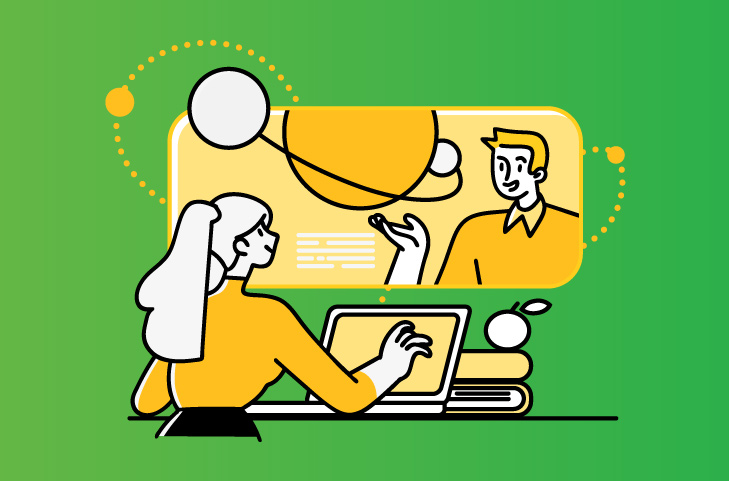A one-to-many marketing campaign will do you no good in today’s B2B landscape. That’s because buying decisions aren’t made by a single stakeholder anymore. Instead, they are a result of a consensus between C-suite executives, managers, finance, and technical experts. Safe to say, your marketing campaigns, therefore, must appeal to all of them. And according to a survey from Fulloze, 77% of B2B sales and marketing professionals believe that personalized marketing can help with it.
Personalizing marketing campaigns for such a broad audience starts with customer segmentation. And this blog tells you all you need to know about it.
What is Customer Segmentation?
This is the process of creating segregated B2B customer lists by grouping buyers based on common characteristics. Such segmentation allows marketers like you to create targeted campaigns to convert potential buyers, regardless of their profile.
For instance, you are more likely to get better open rates when you segment your audience and personalize your emails. Even if that means creating a different version of the same email, adding the first name of your lead, and sharing it with different segments. The reason is simple.
Such personalization makes the email more relevant and more likely to be opened. No wonder 62% of marketers surveyed by Litmus revealed that they already personalized their emails by consumer segment.
Types of B2B Customer Segments in Marketing

B2Bs typically use one of the following models to create customer segments:
- Demographic segmentation: Here, customers are segmented into groups based on demographic characteristics like age, industry, job profile, company revenue, and average income. Segmenting customers as such gives you a clear picture of the professional problems they might face. Then you can build a campaign showing how your product addresses these issues.
- Behavioral segmentation: Here, customers are segmented based on their on-site or social media interactions. Such segmentation helps you make campaigns around customer intent and predicted behavior.
- Geographic segmentation: Segregating customers based on their geographical location is useful when you’re looking to expand to newer markets or are selling specific products and services in separate markets.
- Technographic segmentation: This involves separating buyers into groups based on the technologies they currently use. Segmenting your customers like this allows you to understand which technologies they lack and market your products accordingly.
- Psychographic segmentation: This is segmentation based on how customers perceive certain products. Segmenting customers this way will tell you what your customers value and help you craft a marketing message that appeals to them.
- Value-based segmentation: This involves classifying customers based on how likely they will bring a sale and helps marketers decide their marketing spend. For instance, C-suite executives are more valuable than managers if the goal is to generate more revenue.
- Needs-based segmentation: Here, buyers are divided into groups based on their physical, emotional financial needs. And marketing to groups segregated this way involves addressing their pressing concerns.
Getting Started with Customer Segmentation

1. Determine Which Type of Segmentation is Suitable for B2B Marketing
Implementing successful customer segmentation into your marketing strategy begins with choosing the right segmentation model based on your goals. Start with identifying your current marketing goals. Ask questions like-
- What is the purpose of our marketing currently?
- Are we looking to grow our marketing-qualified leads, or are we looking to increase conversions?
- Is brand awareness adequate?
- What is our target market?
- What is our niche?
Answering such questions will help you identify the segmentation model you should implement and choose the selection criteria. Say, you’re a SaaS company looking to increase conversion rates. If your target audience is located in the US and your product caters to managers, you could opt for needs-based segmentation.
This way, you could segregate customers based on their budgets and software needs and create a targeted email marketing campaign based on them. To track this campaign’s success, you could measure KPIs like total SQLs (sales qualified leads), email open rate, email click through rate, etc.
2. Perform Segmentation
Once you decide on a segmentation model and select the grouping criteria, you need to segment your lead data. You could do this manually or use a CRM (customer resource management) tool or AI (artificial intelligence).
Remember that manual and CRM-based segmentation largely depends on human analysis. This means there is always a possibility of human error. In contrast, AI-based segmentation is dynamic and quick and eliminates human bias.
Don’t want to segment customer data yourself? You can ask a third-party data provider to do the segmentation for you, or you can source pre-segmented B2B customer lists.
3. Understand Customer Goals and Craft Appropriate Messaging
Once you segregate your customer base into groups, identify what makes them tick. Identify their common objectives, goals, and pain points.
These might be evident at first glance with audience research, checking testimonials of competitors with a similar target audience, or conducting interviews to understand them. Once you do this, you can move on to crafting the messaging.
For instance, if your customers currently use software with a difficult user interface, you could address it in your marketing. You could publish a blog post stating how your product has a better user interface or post it on social media. This will help you attract leads looking for solutions.
4. A/B-test the Messaging
Remember, you cannot nail down the messaging for your campaign for all your B2B target customer segments in one go. So, before deploying a campaign, perform A/B testing for your messaging. Send multivariate test emails, for instance, to your different market segments and check how they respond to them. Do the open rates or click-through rates increase? Do some leads sign up for your free trial after reading an email?
Answers to these questions will allow you to narrow down your messaging and develop campaigns that will give better ROIs.
5. Personalize at Scale with Automation

The last step to successful customer segmentation is personalizing your messaging at scale. This could include mentioning your prospect’s email or targeting an advertisement to them. You can do this manually and waste precious time or use automation to help with it.
According to Litmus, 59% of marketers have already prioritized using automation in their email programs.
With all the above information, you can perform customer segmentation successfully. Remember that customer segmentation is a continuous process. But going the extra mile can get you higher quality leads over time.
Today, you can also get pre-segmented customer lists, no matter your industry, from reputed data providers like us at Span Global Services. We ensure our lead data is up-to-date and accurate through email and telephone validation. Visit our website to learn more.


